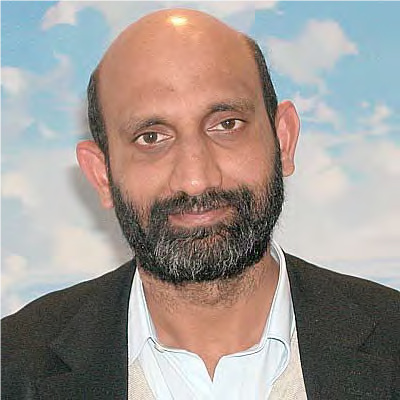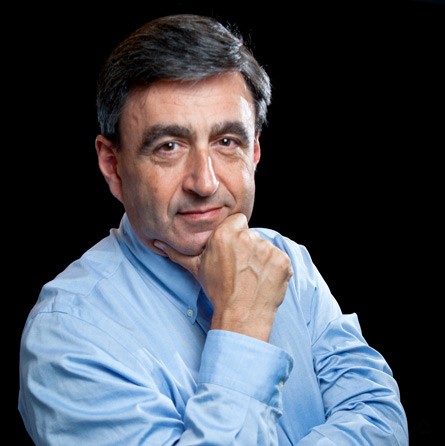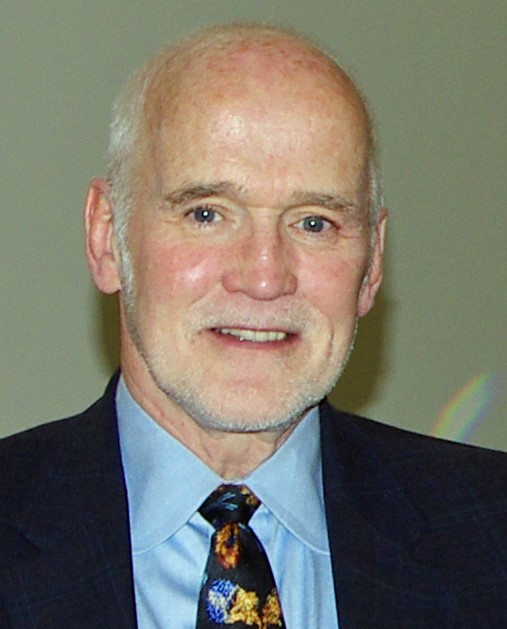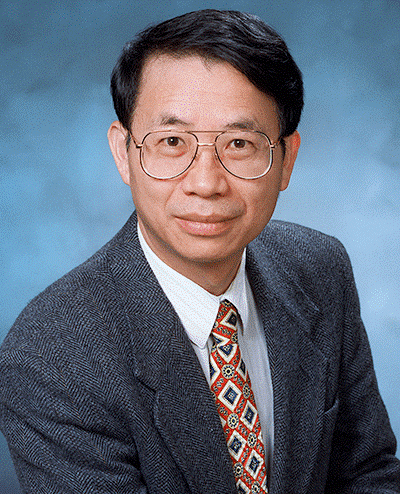
Chennupati Jagadish AC
- Distinguished Professor, Australian National University (ANU)
- Convenor, Australian Nanotechnology Network
- Director (ACT Node), Australian National Fabrication Facility
Specialized Field: Compound Semiconductor Optoelectronics / Nanotechnology / Photovoltaics / Materials Science
Title: Semiconductor Nanowires for Optoelectronics and Energy Applications
Jagadish is currently a Distinguished Professor and Head of Semiconductor Optoelectronics and Nanotechnology Group in the Department of Electronic Materials Engineering, Research School of Physical Sciences and Engineering, the Australian National University. He is also serving as Director of Australian National Facbrication Facility, ACT node and Convenor of the Australian Nanotechnology Network. Jagadish is a winner of 2000 Institute of Electrical and Electronics Engineers, Inc (USA) (IEEE) Third Millennium Medal and a Distinguished Lecturer of IEEE Nanotechnology Council (NTC), IEEE Lasers and Electro-Optics Society (LEOS) and IEEE Electron Devices Society (EDS). He has published more than 820 research papers (550 journal papers), holds 5 US patents, co-authored a book, co-edited 6 books, guest edited 15 special issues of journals and edited 12 conference proceedings. Jagadish has served as President of the IEEE Nanotechnology Council (2008 and 2009), Vice-President (Publications) of NTC (2004-2005), President-Elect of NTC (2007), Past-President (2010-2011) and Vice-President (Membership and Regional Activities- Asia-Pacific) of the IEEE Lasers and Electro-Optics Society (2006 and 2007) and Vice-President (Finance and Administration) of IEEE Photonics Society (2012-14).
Abstract :
Semiconductors have played an important role in the development of information and communications technology, solar cells, solid state lighting. Nanowires are considered as building blocks for the next generation electronics and optoelectronics. In this talk, I will introduce the importance of nanowires and their potential applications and discuss about how these nanowires can be synthesized and how the shape, size and composition of the nanowires influence their structural and optical properties. I will present results on axial and radial heterostructures and how one can engineer the optical properties to obtain high performance lasers, THz detectors and solar cells. Future prospects of the semiconductor nanowires will be discussed.

Eric Mazur
- President, Optical Society of America(OSA)
- Balkanski Professor, Harvard University
- Chairman, Scientific Advisory Board, SiOnyx
Specialized Field: Experimental Ultrafast Optics / Condensed Matter Physics
Title: Subcellular surgery and nanosurgery
is the Balkanski Professor of Physics and Applied Physics and Dean of Applied Physics at Harvard University, Member of the Faculty of Education at the Harvard Graduate School of Education, and President of the Optical Society.
Mazur is a prominent physicist known for his contributions in nanophotonics, an internationally recognized educational innovator, and a sought after speaker. In education he is widely known for his work on Peer Instruction, an interactive teaching method aimed at engaging students in the classroom and beyond. In 2014 Mazur became the inaugural recipient of the Minerva Prize for Advancements in Higher Education. He has received many awards for his work in physics and in education and has founded several successful companies. Mazur is Chief Academic Advisor for Turning Technologies, a company developing interactive response systems for the education market. Mazur has widely published in peer-reviewed journals and holds numerous patents. He has also written extensively on education and is the author of Peer Instruction: A User's Manual (Prentice Hall, 1997), a book that explains how to teach large lecture classes interactively, and of the Principles and Practice of Physics (Pearson, 2015), a book that presents a groundbreaking new approach to teaching introductory calculus-based physics.
Abstract :
We use femtosecond laser pulses to manipulate sub-cellular structures inside live and fixed cells. Using only a few nanojoules of laser pulse energy, we are able to selectively disrupt individual mitochondria in live bovine capillary epithelial cells, and cleave single actin fibers in the cell cytoskeleton network of fixed human fibro-blast cells. We have also used the technique to micromanipulate the neural network of C. Elegans, a small nematode. Our laser scalpel can snip individual axons without causing any damage to surrounding tissue, allowing us to study the function of individual neurons with a precision that was not achievable before.

Eugene Arthurs
- CEO, The international society for optics and photonics (SPIE)
Specialized Field: Generation / Measurement of Tunable Ultrashort Pulses
Title:Biophotonics: Problems Demanding Solutions
Eugene G. Arthurs joined SPIE staff as Executive Director in November 1999. Prior to this he was President and CEO of Cleveland Crystals Inc. (CCI) He joined CCI, a closely held company, in 1997 and after reorganizing the company he marketed and sold it at the end of 1998.
Eugene received his B.Sc. (1st class honours) in 1972 in Physics, and his Ph.D. in 1975 in Applied Physics from Queens University Belfast, N.Ireland. His Ph.D. research was in generation and measurement of tunable ultrashort pulses. In 1973, he taught the M.Sc. class in optoelectronics at Queens while continuing his research. He then moved to Imperial College in London where he conducted U.S. Air Force sponsored research on lasers.
An SPIE member from 1972 or so, Eugene has been active in the American Society for Lasers in Medicine of which he was a founding member, the Council for Optical Radiation Measurement, and the OSA at a local and national level. He is currently a member of SPIE, OSA, IEEE, AAAS, and ASAE. He is a member of the board of Edmund Optics, the Advisory Boards to the Canadian Institute for Photonics Innovation and the Scottish University Physics Alliance, and also a member of the Photonics21 Board of Stakeholders. A former Congressional District Organizer, he remains active in Bread for the World, an educational and public policy organization working on the basic causes of world hunger.

Shin-Tson Wu
- Pegasus Professor, University of Central Florida (UCF)
Specialized Field: Liquid Crystal Research / Adaptive Optics / Laser Beam Steering / Biophotonics / New Photonic Materials
Title: Challenges and prospects of AR and VR displays
Dr. Shin-Tson Wu is a Pegasus professor at the College of Optics and Photonics, University of Central Florida (UCF). Prior to joining UCF in 2001, he was with Hughes Research Labs (Malibu, California), where the first laser and liquid-crystal-on-silicon were invented. Dr. Wu is among the first six inductees to the Florida Inventors Hall of Fame. He is a Charter Fellow of the National Academy of Inventors, and a Fellow of the IEEE, OSA, SID, and SPIE. He is the recipient of OSA Esther Hoffman Beller Medal (2014), honorary professor of Nanjing University (2013), SID Slottow-Owaki Prize (2011), OSA Joseph Fraunhofer Award (2010), SPIE G. G. Stokes Award (2008), and SID Jan Rajchman Prize (2008). He was the founding chief editor of the IEEE/OSA Journal of Display Technology. He has co-authored 7 books, 500+ journal papers, and obtained 85 U.S. patents. Presently, he is serving as SID honors and awards committee chair.
Abstract :
Virtual reality (VR) and augmented reality (AR) displays are growing rapidly with numerous applications, such as entertainment, education, tourism, medicine, and simulated training. Microdisplay and imaging optics make critical impacts on both the ergonomics and optical performance of these head mounted (or glass-type) display systems. Some technical challenges including resolution, field of view, compactness and lightweight, latency, focus cue mismatch, and occlusion capability remain to be improved. Presently, three major microdisplay technologies used in VR and AR are organic light emitting diode (OLED) display, liquid crystal display (LCD; both transmissive and reflective modes), and MEMS. In this seminar, I will analyze the pros and cons of each microdisplay and imaging technology, review the latest progress, and discuss the future development directions.
Po Dong
- Department head, silicon photonics research group, Bell Labs, Nokia, USA
Specialized Field: silicon and III-V photonic integrated circuits/ nonlinear optics/optical communications
Title: Silicon Photonics for Terabit Optical Data Links
Po Dong is currently the department head of silicon photonics research group at Bell Labs, Nokia, USA. He is working on developing photonic integrated circuits to achieve high-bandwidth and low-power optical links. Previous to Bell Labs, he served as a principal engineer at Kotura after working as a postdoctoral research fellow at Cornell University, Ithaca, USA. He received the Ph. D. degree in electrical engineering from McGill University, Montreal, Canada. His research areas mainly include silicon and III-V photonic integrated circuits, nonlinear optics, and optical communications. He has authored and co-authored about 200 journal and conference publications. He serves as a committee member or chair of optical conferences such as OFC, CLEO, IPR, and also an associated editor of Optics Express from 2012. He is appointed as the program chair of OFC 2019. He is a senior member of IEEE and a fellow of OSA.
Abstract :
The future data centers and data communication infrastructure will deliver tens of terabits data in a single optic fiber to provide service such as secure e-commerce transactions, low latency driverless transportation, high bandwidth AR/VR delivery, etc. In this talk, we will illustrate the advances of the emerging silicon photonics technology as a low cost highly integrated solution to power the tera-bit optical data links.